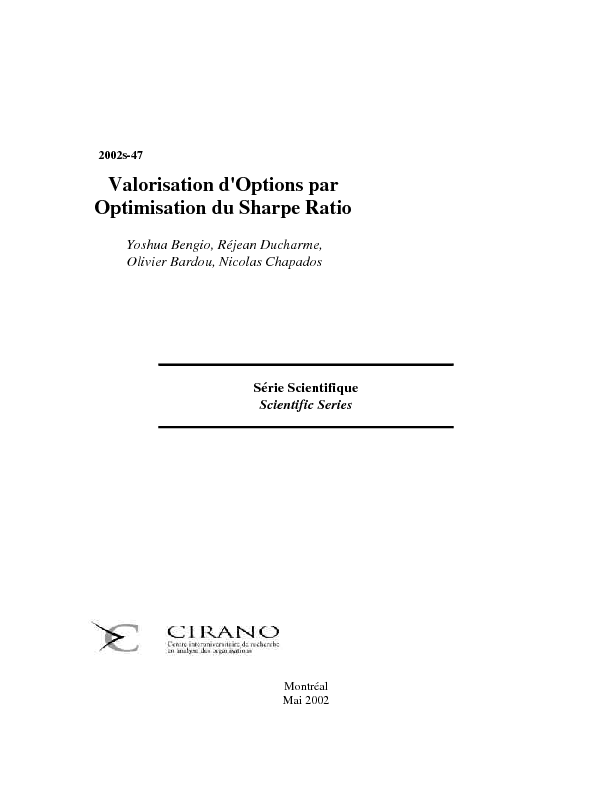Valorisation d'options par optimisation du Sharpe Ratio
Prior work on option pricing falls mostly in two categories: it either relies on strong distributional or economical assumptions, or it tries to mimic the Black-Scholes formula through statistical models, trained to fit today's market price based on information available today. The work presented here is closer to the second category but its objective is different: predict the future value of the option, and establish its current value based on a trading scenario. This work thus innovates in two ways: first it proposes an empirical and hypothesis-free method to compare different option pricing systems (by having trade against each other or against the market), second it uses this criterion to train a non-parametric statistical model (here based on neural networks) to estimate a price for the option that maximizes the expected utility when trading against the market. Note that the price will depend on the utility function and current portfolio (i.e. current risks) of the trading agent. Preliminary experiments are presented on the S&P 500 options.
[ - ]




